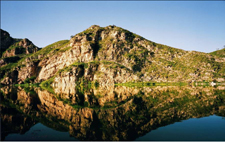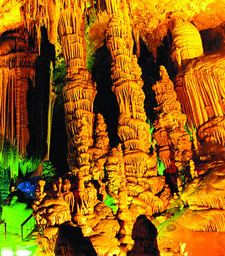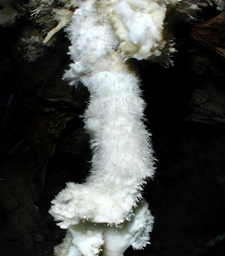
%c_location% Home > Members list
Fangshan Geopark
Fangshan Global Geopark is located in the southwest suburb of Fangshan District of Beijing, which is40 km away from downtown Beijing. Administratively, it strides across three counties (district): Fangshan District of Beijing City, Laiyuan County and Laishui County of Baoding City, Hebei Province. The Geopark holds a total area of 953.95 km2, and is divided as the following 8 scenic districts:
(1) Zhoukoudian scenic district (“Peking Man” paleo-anthropological site); (2) Shihuadong scenic district; (3) Shidu scenic district; (4) Baihuashan - Baicaopan scenic district; (5) Yunju Temple - Shangfangshan scenic district; (6) Shenglianshan scenic district (the above six scenic districts belong to Fangshan District of Beijing City); (7) Yesanpo scenic district; and (8) Baishishan scenic district (the latter two scenic districts belong to Laishui County and Laiyuan County of Baoding City, Hebei Province).
Fangshan Global Geopark of Beijing holds very rich geological remains. They have displayed the earth’s evolution of billions of years in North China. The variations and vicissitudes of the geological periods from Archean, Proterozoic, Paleozoic, and Mesozoic, and finally to Cenozoic in the Geopark have brought about a vast natural geological museum in Fangshan Global Geopark.
The discovery of "Peking Man" in the Geopark in 1929 had astonished the whole world; and Zhoukoudian has ever since been recognized in the world as one of the human birthplaces and becomes an important site for paleo-anthropological studies. The widely distributed and characteristic geological remains reflecting the intra-continental orogenesis have made the Geopark the naming place of Yanshanian Movement, which stands for the eastern China's Mesozoic orogenesis. It is right these precious geological remains that had cultivated China's first geological survey in as early as more than 100 years ago and had fostered China's first generation of geological celebrities.
In the Geopark, the well developed surface karst landforms and manifold cavernous chemical sediments are the typical representatives of North China's semi-arid semi-moist karst landform, which are of high values in sightseeing. The cuestas and dike- and tower-shaped mountains are erecting sharply into the sky, and have shown grand scenery of North China’s karst landform. The negative landforms appearing as curtain-like peak-valleys extend zigzag for tens of miles; the "grandness", "unaccessibleness", "marvellousness", and "fantasticalness" of the landscapes will always be a stunner to the visitors. The double-layered structure of marble and granite in Baishishan scenic district is actually a special structural-washing-scouring karst landform. The Shihuadong karst caves and their manifold cavernous chemical sediments are the ad hoc products of North China's special geological conditions; the underground karstic art palace is of great importance in both sightseeing and scientific studies.
The long-standing human history has accumulated profound cultural heritages in the Geopark. The ancient architectures, grottoes, stone inscriptions, ancient relics, and ancient tombs have comprised of abundant cultural landscapes and touring resources.
Fangshan Global Geopark is of extremely high values in geosciences, aesthetics, cultures and history; meanwhile, it is an important place for scientific studies, science popularization, and tourism.
Contact:
Website:http://dzhgy.bjfsh.gov.cn/en/index.asp


